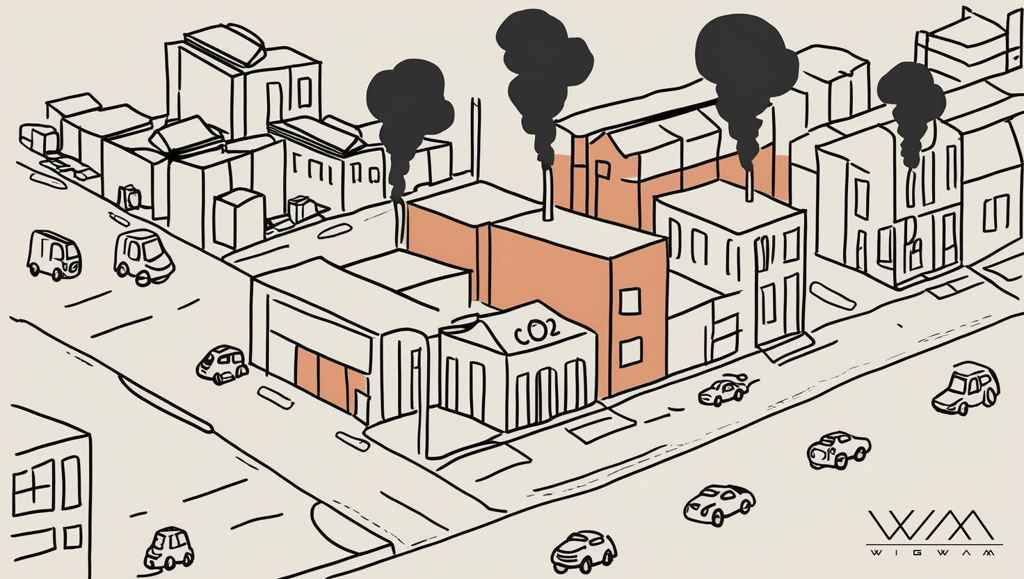The Carbon Footprint of Gas in the Built Environment
3/18/20252 min read


I am convinced: the era of defending fossil gas as a “transition fuel” is over. For some of you this may seem a subject of the past, though considering my recent meetings in the office, I felt the need to reiterate that gas is no longer an accepted alternative. Our industry stands at a pivotal moment—one that demands honest reflection and bold, forward-thinking action.
Gas: A Mirage of Lower Emissions At first glance, gas appears to be a cleaner option than coal, but the reality is more complex. While burning gas emits less CO₂, the methane leakage during extraction and transport has an equally damaging impact. Methane’s global warming potential is 84 TIMES that of CO₂ over a 20-year timeframe. In dense urban environments, where gas infrastructure is deeply embedded, this leakage drastically undermines our decarbonization efforts. In fact, buildings account for 42% of global gas demand for heating, and in Australia, gas powers 70% of residential energy needs.
The Responsibility of Design and Construction Every new gas-connected building we design locks in decades of emissions. Consider a 50-unit apartment complex: when powered by gas for heating and cooking, it can generate 1,200–1,500 tons of CO₂ annually—equivalent to running 300 petrol-powered cars every year. This is not just a statistic; it’s a call to action for architects and developers who are at the forefront of shaping our urban landscapes. The International Energy Agency’s 1.5°C pathway insists on phasing out gas in electricity generation by 2040 and reducing gas use in buildings to less than 5% by 2030 in developed nations.
Strategic Implications for Architects and Developers
· Design Overhaul: Transitioning away from gas means reimagining building layouts to support heat pumps, induction cooktops, and electric water heaters. I’ve seen firsthand how innovative designs—like Niall McLaughlin Architects’ Saltmarsh House in the UK—integrate an air-source heat pump into a beautifully designed copper-clad cylinder. It’s a striking reminder that sustainability and aesthetics can go hand in hand.
· Cost-Benefit Shifts: Although gas appliances might have lower initial costs, all-electric homes can deliver significant long-term savings. In Australia, coupling these homes with solar PV can reduce energy bills by $500–$1,200 annually. It’s crucial for us to educate our clients on the lifecycle savings and explore green financing options that support these investments.
· Regulatory Preparedness: Policy changes are already reshaping our industry. Victoria’s Gas Substitution Roadmap (2024) has banned gas connections in new residential buildings, a trend that is likely to expand nationwide. Forward-thinking firms are adopting voluntary standards like the RIBA 2030 Climate Challenge to stay ahead of these mandates and lead the market transformation.
Overcoming Challenges and Supporting Our Community Transitioning away from gas isn’t without its challenges. It involves rethinking traditional design practices, overcoming cost barriers, and adapting to rapidly evolving regulations. I’ve encountered resistance, scepticism, and even frustration during this transition, but these challenges have also been opportunities for growth and innovation. We must continue to support each other, share experiences, and drive collective progress within our community.
Our commitment to sustainable design and construction isn’t just about meeting regulations—it’s about setting a new standard for quality of life, energy efficiency, and environmental stewardship. Every project we undertake is a chance to leave a lasting, positive impact on our communities and the planet.
Let’s embrace these changes with determination and optimism, knowing that every step we take brings us closer to a resilient, sustainable future.
Sources: International Energy Agency – 1.5°C Pathway, Global Gas Demand and Residential Energy Use in Australia, CO₂ Emissions from Gas-Connected Buildings, Saltmarsh House by Niall McLaughlin Architects, Victoria’s Gas Substitution Roadmap (2024)


